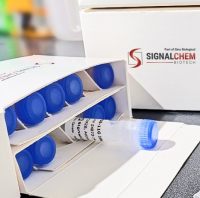Interferon (IFN)τ, a Type I IFN produced by the conceptus trophectoderm, is the pregnancy recognition signal in ruminants that prevents development of the endometrial luteolytic mechanism. In addition, IFNτ acts in a paracrine manner on the ovine endometrium to induce or increase expression of type I IFN-stimulated genes (ISGs). Initially, endometrial explants were cultured with native IFNτ, and the secreted radiolabeled proteins that responded to IFNτ were identified by two-dimensional polyacrylamide gel electrophoresis and fluorography. Next, the ontogeny of putative ISGs was determined in endometrium from cyclic and pregnant ewes; ISGs were confirmed in cyclic ewes that were infused with IFNτ into the uterus. These studies found that most ISGs are increased in the endometrial stroma and glandular epithelium using signal transducer and activator of transcription 1 (Stat1)-dependent pathways. Most ISGs are not induced or increased by IFNτ in the Stat1-negative endometrial luminal epithelium. Recent experiments have used human 2fTGH and U3A (Stat1 null) cells to determine the IFNτ signaling pathway and discover ISGs regulated by IFNτ using transcriptional profiling. Given that ISGs are increased in the endometrium during pregnancy across diverse species, they may be important in establishment of uterine receptivity to implantation of the conceptus.






